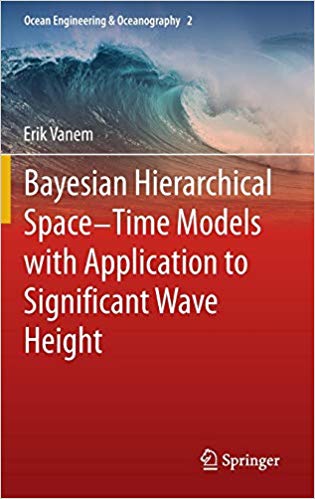Erik Vanem, "Bayesian Hierarchical Space-Time Models with Application to Significant Wave Height "
English | ISBN: 3642302521 | 2013 | 262 pages | EPUB, PDF | 4 MB + 8 MB
English | ISBN: 3642302521 | 2013 | 262 pages | EPUB, PDF | 4 MB + 8 MB
This book provides an example of a thorough statistical treatment of ocean wave data in space and time. It demonstrates how the flexible framework of Bayesian hierarchical space-time models can be applied to oceanographic processes such as significant wave height in order to describe dependence structures and uncertainties in the data.
This monograph is a research book and it is partly cross-disciplinary. The methodology itself is firmly rooted in the statistical research tradition, based on probability theory and stochastic processes. However, that methodology has been applied to a problem in the field of physical oceanography, analyzing data for significant wave height, which is of crucial importance to ocean engineering disciplines. Indeed, the statistical properties of significant wave height are important for the design, construction and operation of ships and other marine and coastal structures. Furthermore, the book addresses the question of whether climate change has an effect of the ocean wave climate, and if so what that effect might be. Thus, this book is an important contribution to the ongoing debate on climate change, its implications and how to adapt to a changing climate, with a particular focus on the maritime industries and the marine environment.
This book should be of value to anyone with an interest in the statistical modelling of environmental processes, and in particular to those with an interest in the ocean wave climate. It is written on a level that should be understandable to everyone with a basic background in statistics or elementary mathematics, and an introduction to some basic concepts is provided in the appendices for the uninitiated reader. The intended readership includes students and professionals involved in statistics, oceanography, ocean engineering, environmental research, climate sciences and risk assessment. Moreover, the book’s findings are relevant for various stakeholders in the maritime industries such as design offices, classification societies, ship owners, yards and operators, flag states and intergovernmental agencies such as the IMO.



